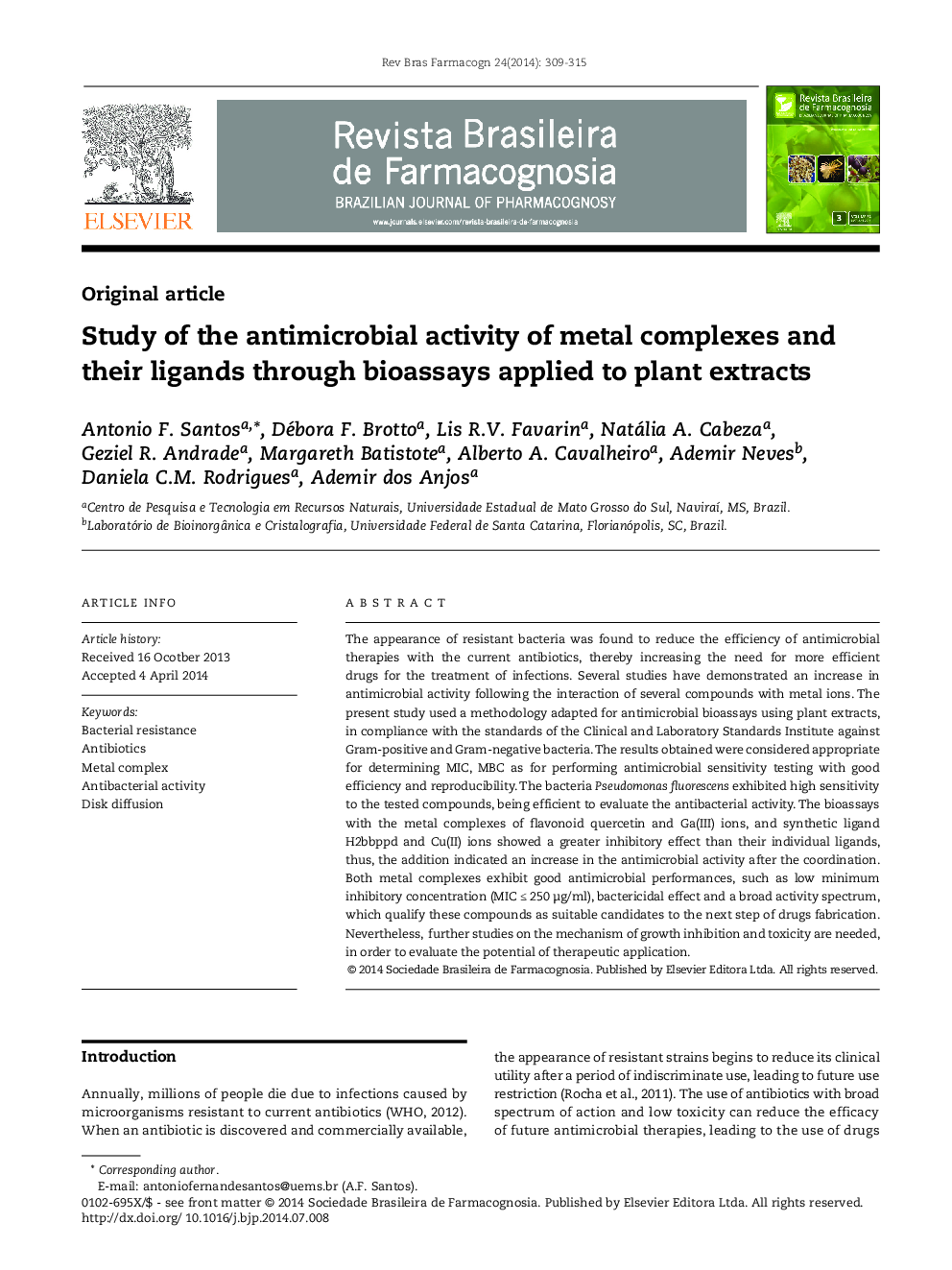| Article ID | Journal | Published Year | Pages | File Type |
|---|---|---|---|---|
| 2577788 | Revista Brasileira de Farmacognosia | 2014 | 7 Pages |
The appearance of resistant bacteria was found to reduce the efficiency of antimicrobial therapies with the current antibiotics, thereby increasing the need for more efficient drugs for the treatment of infections. Several studies have demonstrated an increase in antimicrobial activity following the interaction of several compounds with metal ions. The present study used a methodology adapted for antimicrobial bioassays using plant extracts, in compliance with the standards of the Clinical and Laboratory Standards Institute against Gram-positive and Gram-negative bacteria. The results obtained were considered appropriate for determining MIC, MBC as for performing antimicrobial sensitivity testing with good efficiency and reproducibility. The bacteria Pseudomonas fluorescens exhibited high sensitivity to the tested compounds, being efficient to evaluate the antibacterial activity. The bioassays with the metal complexes of flavonoid quercetin and Ga(III) ions, and synthetic ligand H2bbppd and Cu(II) ions showed a greater inhibitory effect than their individual ligands, thus, the addition indicated an increase in the antimicrobial activity after the coordination. Both metal complexes exhibit good antimicrobial performances, such as low minimum inhibitory concentration (MIC ≤ 250 μg/ml), bactericidal effect and a broad activity spectrum, which qualify these compounds as suitable candidates to the next step of drugs fabrication. Nevertheless, further studies on the mechanism of growth inhibition and toxicity are needed, in order to evaluate the potential of therapeutic application.
